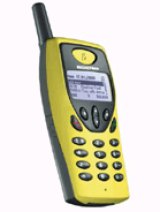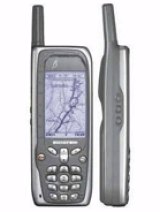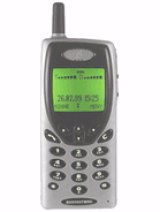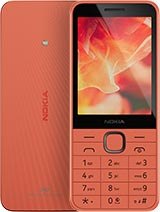
Benefon Twin+
Discover the sleek and reliable Benefon Twin+ mobile phone, announced in 2000 with a monochrome graphic display and removable 650 mAh battery. Available in 3 colors and perfect for GSM networks. Get yours today!
Technical Specifications and Features Summary:
Announced: 2000
Status: Discontinued
Network: GSM
Battery: Removable Li-Ion 650 mAh
Available color(s): 3
The Fascinating Story of the Benefon Twin+: A Revolutionary Dual SIM Phone Launched in 2000
The year was 2000, and the mobile phone industry was dominated by big players like Nokia, Motorola, and Ericsson. Amidst the sea of mass-produced devices, one phone stood out as a true game-changer: the Benefon Twin+. This revolutionary device, marketed as a "dual SIM phone," quickly gained popularity and changed the way people thought about their cellphones. Join us as we dive into the fascinating story of the Benefon Twin+.In 2000, Finland-based Benefon Oy announced the launch of a new mobile phone that would change the way people use their devices. The Benefon Twin+ was marketed as a dual SIM phone, a concept that was relatively unknown at the time. This means that the phone had the capability to hold two SIM cards, allowing users to switch between two different phone numbers on one device. This was a groundbreaking concept, especially for business professionals who wanted to keep their personal and work lines separate.
Despite its innovative features, the Benefon Twin+ was unfortunately discontinued shortly after its launch. However, its impact on the mobile phone industry was not forgotten.
One of the standout features of the Benefon Twin+ was its memory capacity. While there was no card slot for external storage, the phone was capable of storing up to 255 contacts in its phonebook. This was a significant upgrade compared to other phones at the time, which could only store a limited number of contacts. Additionally, the phone also had a call record feature that could store up to 15 dialed, 5 received, and 5 missed calls. This was particularly helpful for busy professionals who needed to keep track of their call history.
The Benefon Twin+ had a monochrome graphic display, which was the standard for phones in 2000. Despite this, the phone offered some unique features, such as electro-luminescent lighting and dynamic & user-selectable font size. This allowed users to customize their display and make it easier to read based on their preferences.
In terms of its physical appearance, the Benefon Twin+ was a bit bulkier than other phones due to its dual SIM capability. However, it was still relatively compact with dimensions of 112 x 49 x 27 mm and a weight of 105 g. The phone also had a dual SIM (mini-SIM) option, which was a necessary addition for its unique feature.
One feature that was notably missing from the Benefon Twin+ was a camera. While it may seem like a basic feature in today's smartphones, back in 2000, cameras in mobile phones were still a novel concept. However, the phone made up for this by offering an impressive battery life. The removable Li-Ion 650 mAh battery had a standby time of 200 hours and a talk time of 9 hours, making it reliable for extended use.
The Benefon Twin+ operated on the GSM network and did not have GPRS or EDGE capabilities. While this may seem like a disadvantage, the phone was able to offer other features that made up for this. For instance, it had a stereo FM radio with RDS support, perfect for listening to music on-the-go. It also had several downloadable monophonic ringtones and personalized ringing melodies, making it easy to customize the phone according to one's style.
In terms of connectivity, the Benefon Twin+ did not offer WLAN or Bluetooth. But it did have location-based services support, predictive text input, and an organizer, making it ideal for those who needed to stay organized and efficient while on-the-go.
The phone also came with three games: Wall Breaker, Galactic Gunner, and Labyrinth. While this may seem like a small detail, it was a significant addition to the phone as mobile gaming was not yet popular at the time. This was just one example of how the Benefon Twin+ was ahead of its time.
The Benefon Twin+ came in three different colors to choose from, adding a touch of personalization for users. It also had various important features like a clock, alarm, and user-changeable display masks, making it a well-rounded device.
In conclusion, the Benefon Twin+ may have been discontinued, but its impact on the mobile phone industry was undeniable. It paved the way for dual SIM phones, which are now commonplace in the market. Its impressive features and unique design made it a standout device in its time and a true blast from the past. Who knows, if not for its discontinuation, the Benefon Twin+ may have even gone on to become a household name in the mobile phone industry.
Latest Benefon Twin+ Specs and Prices
LAUNCH
- Announced: 2000
- Status: Discontinued
MEMORY
- Card slot: No
- Phonebook: 255
- Call records: 15 dialed, 5 received, 5 missed calls
DISPLAY
- Type: Monochrome graphic
- Size: -
- Resolution: 100 x 48 pixels, 6 lines - Electro-luminescent lighting Dynamic & user-selectable font size
BODY
- Dimensions: 112 x 49 x 27 mm, 115 cc (4.41 x 1.93 x 1.06 in)
- Weight: 105 g (3.70 oz)
- SIM: Dual SIM (Mini-SIM)
CAMERA
- -: No
BATTERY
- Type: Removable Li-Ion 650 mAh battery
- Stand by: 200 h
- Talk time: 9 h
CELLPHONE NETWORK
- Technology: GSM
- 2G bands: GSM 900 / 1800
- Gprs: No
- Edge: No
SOUND
- Loudspeaker : No
- Alert types: Downloadable monophonic ringtones
- 3.5mm jack : No - Personalised ringing melodies Ascending alert Several SMS alert tones and tone levels
COMMUNICATIONS
- WLAN: No
- Bluetooth: No
- Positioning: No
- Radio: Stereo FM radio, RDS
- USB: -
FEATURES
- Sensors: -
- Messaging: SMS
- Browser: -
- Clock: Yes
- Alarm: Yes
- Games: 3 - - Wall breaker, Galactic gunner, Labyrinth
- Java: No - Location-based services support Predictive text input Organizer Phone ON/OFF timers User-changeable display masks
MISCELLANEOUS
- Colors: 3
Disclaimer: Specifications shown may be different from the actual product. We cannot guarantee that the information provided on this page is 100% correct. This content is provided for information purposes only. All information included herein is subject to change without notice.


















Leave your Opinion here